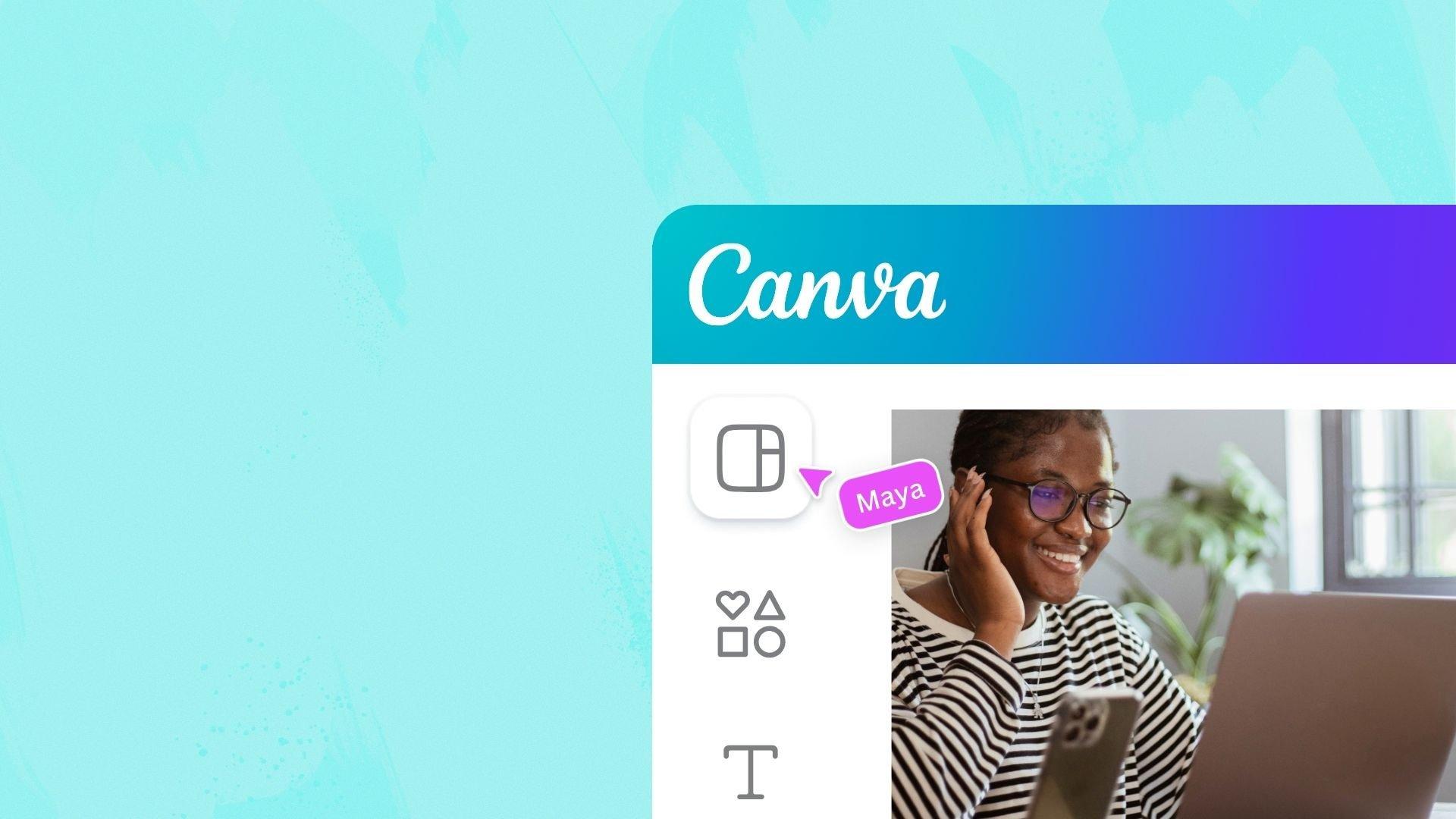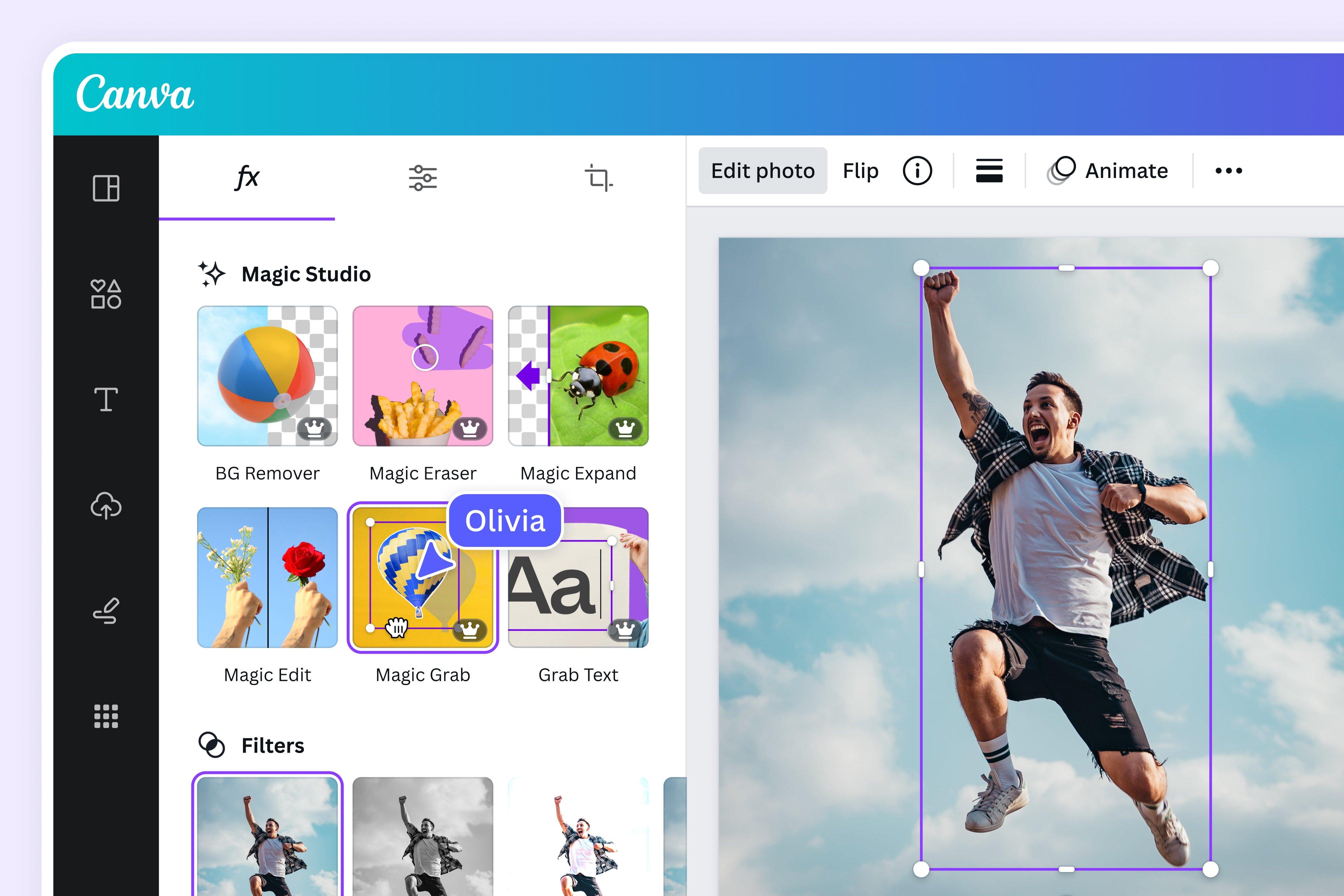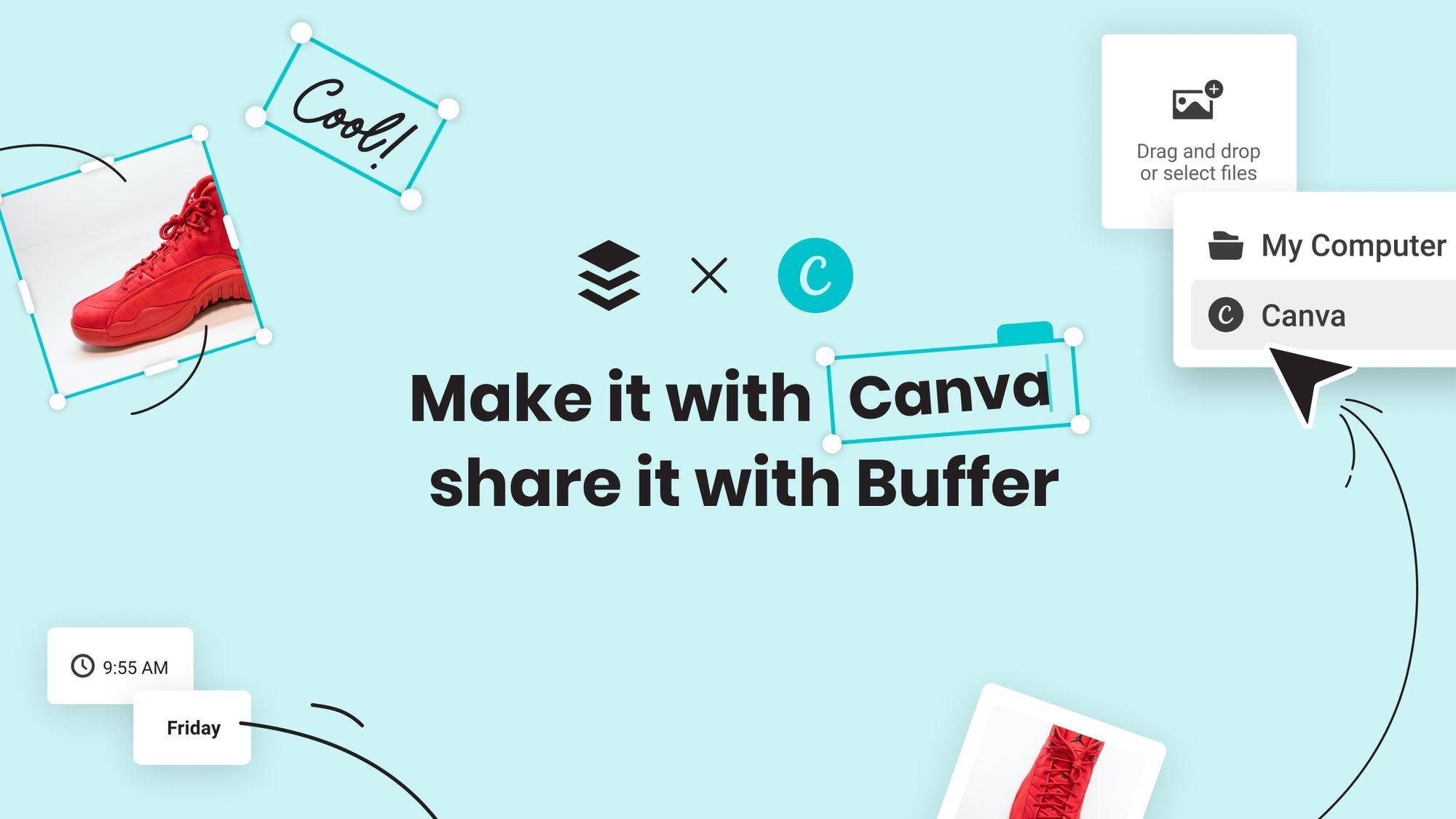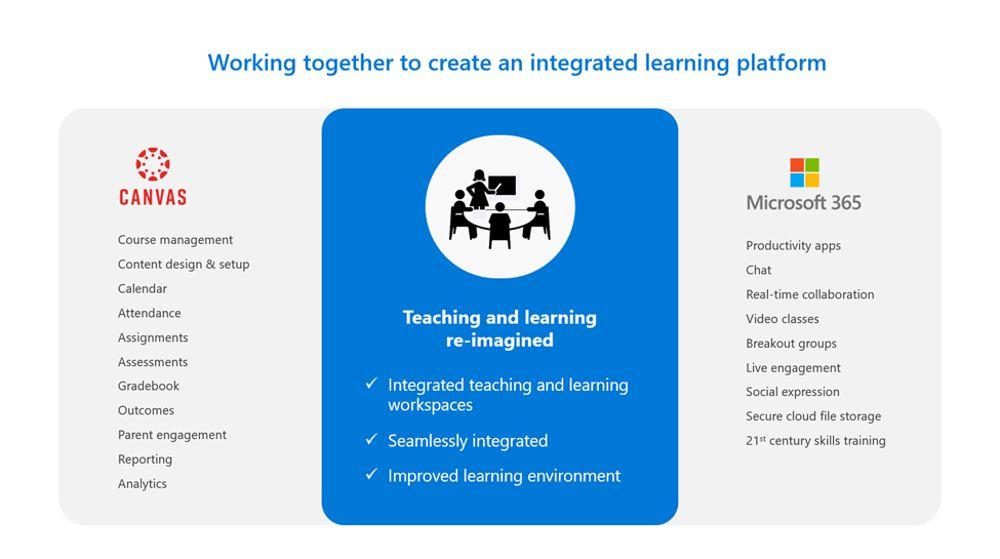Introduction: Unlocking Creativity in Education: How to Integrate Canva with Your LMS
hey there, educators and digital innovators! Are you ready to transform your online learning experience? If you’ve ever felt the struggle of creating engaging content for your students, you’re not alone. With the rise of online education, the demand for visually appealing resources has skyrocketed. Enter Canva—a fantastic design tool that makes creating stunning graphics, presentations, and more a breeze. But wait, why stop there? what if I told you that integrating Canva with your Learning Management System (LMS) could elevate your teaching game to the next level? Imagine seamlessly blending creativity with your educational platform, making your courses not only informative but also visually captivating. In this article, we’ll explore just how easy it is to integrate Canva into your LMS, empowering you to create, share, and inspire like never before. Ready to get started? Let’s dive in!
Understanding the Benefits of Integrating Canva with Your LMS
Integrating Canva with your Learning Management System (LMS) can considerably enhance the learning experience for both instructors and students. Here are some key benefits to consider:
- Enhanced Visual Learning: Canva’s powerful design tools allow educators to create visually appealing content that can help to engage students more effectively. Infographics, presentations, and interactive materials can make complex concepts easier to understand.
- Streamlined Workflow: By integrating Canva directly into your LMS, you eliminate the need for switching between platforms. This means less time wasted on administrative tasks and more focus on teaching and learning.
- collaboration Made Easy: Canva promotes collaboration. Students can work together on projects in real-time, fostering teamwork and dialog skills. This integration allows for seamless sharing and feedback within the LMS environment.
- Customizable Templates: With a plethora of templates available in Canva,educators can save time while still producing high-quality materials tailored to their specific courses. This adaptability ensures that content is both relevant and engaging.
- Accessibility: Canva’s cloud-based nature means that materials can be accessed from anywhere, making learning flexible. Students can review resources and collaborate from any device, enhancing their learning opportunities.
Furthermore, the integration facilitates tracking and analytics. Educators can monitor student engagement with the materials created in Canva, allowing for data-driven adjustments to teaching strategies. For example, you can assess which visual aids are most effective by analyzing how frequently enough students interact with them.
Considering the skills students need in today’s job market,using a platform like Canva equips them with essential design skills. By incorporating creative projects into their coursework, educators help students develop a portfolio that showcases their capabilities, which can be invaluable in their future careers.
Here’s a speedy comparison table highlighting customary methods versus integrating Canva with your LMS:
| Aspect | Traditional Methods | Canva Integration |
|---|---|---|
| Engagement | Static PDFs, Text-based | Interactive, Visual Content |
| Collaboration | Limited to Email/Feedback | Real-time Collaboration |
| Customization | Generic Templates | Fully Customizable Designs |
| Accessibility | Device Specific | Cloud-Based Access Anywhere |
Ultimately, integrating Canva with your LMS not only enriches the educational environment but also prepares students for a visually-driven world. Embracing this technology can lead to a significant change in how education is delivered and experienced.

Choosing the Right LMS for Seamless Canva Integration
When selecting a Learning Management System (LMS) that integrates seamlessly with Canva, there are several key factors to consider. The right LMS can enhance your educational content, providing both instructors and learners with a rich, engaging experience. Here are some critical points to keep in mind:
- Compatibility: Ensure the LMS supports Canva’s file formats and integration features. A seamless upload and compatibility will save time and reduce frustration.
- User Experience: Look for platforms that prioritize intuitive design. A user-amiable interface will allow both instructors and students to navigate the system effortlessly, enhancing the overall learning experience.
- Collaboration Tools: Choose an LMS that offers collaboration features, enabling users to work together on Canva projects in real-time. This fosters teamwork and creativity among learners.
- Support and Resources: Verify that the LMS provides ample support and resources for using Canva.Tutorials, guides, and customer support can make a significant difference in how effectively users can leverage the integration.
Another crucial aspect is the LMS’s scalability. As your organization grows, you want a platform that can adapt to increasing numbers of users and content. Some LMS platforms offer various plans that cater to different needs, allowing you to upgrade as your requirements evolve. This flexibility can save you from the hassle of migrating to a new system later on.
Additionally, consider the analytics features provided by the LMS. A system that offers robust tracking and reporting capabilities can help you measure the effectiveness of your Canva materials. You can analyze student engagement, completion rates, and feedback to continuously improve your offerings.
| Feature | Importance |
|---|---|
| Integration Simplicity | High |
| Mobile Compatibility | Medium |
| Customization Options | High |
| Cost | Variable |
Lastly, don’t overlook the community support available around the LMS. Active user communities can be a goldmine for troubleshooting tips, creative ideas for using Canva, and sharing best practices. Engaging with other users can enrich your knowledge and enhance your submission of the LMS in conjunction with Canva.
Getting Started: Setting up Canva for Your Learning Management System
Setting up Canva for your Learning Management System (LMS) can significantly enhance your course offerings,making lessons more interactive and visually appealing. To get started, first, ensure you have a Canva account. If you don’t have one, visit canva.com and sign up for free. Once logged in, explore the various templates that Canva offers, specifically designed for educational purposes such as presentations, infographics, and worksheets.
Next, familiarize yourself with the integration capabilities of your LMS. Many platforms, like Moodle, Canvas, and Blackboard, offer direct integrations with Canva, allowing you to upload your designs seamlessly. Check your LMS’s support documentation to find specific steps on how to enable the integration. This will save you time and enhance your workflow.
Once you’ve confirmed the integration process, it’s time to create your first design. Here are a few tips to ensure your graphics resonate with learners:
- Keep it Simple: Focus on clarity and avoid cluttering the design.
- use Engaging Visuals: Incorporate images and colors that capture attention.
- Be Consistent: Stick to a color palette and font style that aligns with your teaching brand.
After creating your content, utilize the sharing features in Canva. You can easily generate a shareable link or download your design in various formats such as PDF or PNG. For those using LMS platforms that support direct uploads, simply select the Canva option in your course editor and choose the designs you want to include.
To help streamline the process, consider creating a checklist for your Canva setup. here’s a simple example:
| Step | Description |
|---|---|
| 1 | Create a Canva account |
| 2 | Explore educational templates |
| 3 | Check LMS integration options |
| 4 | Create engaging designs |
| 5 | Upload designs to your LMS |
Lastly, don’t forget to gather feedback from your learners. Ask them what types of visuals help them understand the material better. This input can guide your future designs and ultimately lead to a more effective learning experience. By integrating Canva into your LMS, you’re not just adding visuals; you’re making learning more dynamic and enjoyable.
Step-by-Step Guide to Connecting canva to Your LMS
Integrating Canva into your Learning Management System (LMS) can elevate your educational experience, making it easier to create and share visually appealing content. here’s how to connect Canva to your LMS step-by-step, ensuring you maximize your teaching and learning potential.
Step 1: Access Your Canva Account
Start by logging into your Canva account. If you don’t have one, you can easily create an account for free. Once logged in, take a moment to familiarize yourself with the platform’s interface, particularly the design tools that will enhance your course materials.
Step 2: Prepare Your Designs
Before connecting Canva to your LMS, create or select the designs you wish to share. Whether it’s presentations, infographics, or course materials, make sure they are polished and ready. Saving your designs in formats compatible with your LMS (like PDF or PNG) will streamline the process.
Step 3: Locate Integrations in Your LMS
Next, navigate to the integration settings in your LMS. This can usually be found in the dashboard under settings or integrations. Look for Canva among the list of available tools. If your LMS supports it, you may find direct Canva integration options.
Step 4: Authenticate the Connection
To connect Canva to your LMS, you will often need to authenticate the connection. This typically involves:
- Clicking on the Canva option in your LMS integrations.
- Following prompts to log into your Canva account.
- Granting necesary permissions for the integration.
Step 5: Embed or Share Your Designs
Once the connection is established, you can easily embed or share your Canva designs directly within your LMS. Depending on your platform, you may have options to:
- Embed designs directly into course content.
- share links to your designs for student access.
- Upload designs to specific modules or lessons.
Step 6: Test the Integration
Before finalizing your content, it’s essential to test the integration. Ensure that your designs display correctly and that links are functioning.Having a colleague or student review the content can provide additional feedback on usability.
Step 7: Keep Your Designs Updated
One of the benefits of using Canva is the ability to update your designs easily. ensure you regularly revisit and refresh your content to keep it relevant and engaging. Using the integration allows for automatic updates within your LMS once changes are made in Canva.
By following these steps,you can seamlessly integrate Canva into your LMS,enhancing the educational experience for both you and your students. Get creative, and start making learning visually appealing!

Creating Engaging Course Materials with Canva
Are you looking to enhance your course materials and capture your students’ attention? Canva offers a versatile platform for educators to create stunning and interactive content. Here are some key strategies to make the most out of Canva when designing your courses:
- Templates Galore: Take advantage of Canva’s extensive library of templates tailored specifically for educational needs. From presentations to infographics, you can easily find a design that fits your topic and style.
- Branding Your Courses: Maintain a consistent brand identity by using your institution’s colors, logos, and fonts. Canva allows you to set brand kits, ensuring that every piece of content aligns visually with your overall branding.
- Interactive Elements: Incorporate interactive elements such as clickable links, embedded videos, and animations. This not only makes your materials more engaging but also encourages students to interact with the content actively.
- Collaborative Design: Canva facilitates collaboration among educators.You can invite colleagues to co-create materials, share feedback in real-time, and build a library of resources that everyone can access.
- Print and Digital: Whether your course is delivered online or in a classroom, Canva allows you to create materials suitable for both formats.Easily adjust designs for print or digital presentation without losing quality.
| Material Type | Canva Feature |
|---|---|
| Presentation | Templates & Animations |
| Infographic | Data Visualization Tools |
| social Media Post | Customizable Sizes & Formats |
| Printable Worksheets | Print-Ready Designs |
By integrating Canva into your Learning Management System (LMS), you open up a world of possibilities for creating captivating course materials that resonate with your students. The ease of use and versatility will empower you to deliver high-quality educational content that stands out in a crowded digital landscape.

Tips for Optimizing Your Canva Designs for Online Learning
Creating visually appealing designs in Canva is just the beginning; optimizing these designs for online learning environments is crucial for maximum engagement and effectiveness. Here are some practical tips to enhance your canva creations:
- Keep it simple: Avoid clutter in your designs. Use ample white space to ensure that your content is easy to read and navigate. Simple layouts help learners focus on the key messages.
- Use Contrasting Colors: Choose a color palette that enhances readability.high contrast between text and background ensures that your audience can easily digest the facts presented.
- Consistent Branding: Maintain consistency across all your designs. Use the same fonts, colors, and logos to foster a cohesive learning experience.This not only enhances brand recognition but also comfort for learners.
- Accessible Fonts: Select fonts that are easy to read. Sans-serif fonts are often more legible on screens. Be mindful of font sizes; headings should stand out, but body text should be comfortable for reading.
- Incorporate Visual Hierarchy: Guide your learners’ eyes through your content. Use headings, subheadings, and bullet points to break down information and highlight crucial points effectively.
When embedding your Canva designs into your LMS, it’s essential to consider the format. Saving your designs as PNG or JPEG files often works best for images, while PDF formats are ideal for multi-page documents. ensure the resolution is high enough to maintain clarity on various devices, but not so high that it slows down loading times.
Lastly, always preview your designs within the LMS environment. Check how they appear on different devices and screen sizes to ensure a seamless experience for all learners. A quick test run can reveal issues you might have missed earlier and can make a significant difference in the overall effectiveness of your content.
| Design Element | Best Practices |
|---|---|
| Color Scheme | Use a limited palette; opt for 2-3 primary colors. |
| Font Selection | Choose 1-2 fonts; keep body text legible. |
| Images | Use high-quality visuals that support learning objectives. |
| Layout | Stick to a grid; avoid overwhelming designs. |

Overcoming Common Challenges in Canva and LMS Integration
Integrating Canva with your Learning Management System (LMS) can transform the way you create and deliver educational content. However, there are several challenges you might encounter along the way. Understanding these obstacles and how to overcome them will make the integration process smoother and more effective.
One common hurdle is the compatibility of file formats. Canva offers various formats for download,but not all LMS platforms accept the same files.To tackle this issue, ensure you are downloading your designs in a compatible format. Here’s a quick reference table for some popular LMS platforms and their supported file formats:
| LMS Platform | supported File Formats |
|---|---|
| Moodle | PDF, JPG, PNG, MP4 |
| Blackboard | PDF, DOCX, MP4 |
| Canvas | PDF, JPG, MP4, GIF |
Another challenge is ensuring that design elements created in Canva maintain their integrity when uploaded to your LMS. Sometimes, images may appear distorted or lose quality during the upload process. To prevent this, always check the resolution of your images and avoid excessive resizing. Here are some tips to keep in mind:
- Export your designs at the highest resolution possible.
- Use vector formats (like SVG) for icons and logos when available.
- Preview the content in your LMS to check for any discrepancies before finalizing.
Additionally, it’s crucial to address the user experience when integrating Canva with an LMS.Students may struggle with navigation if the interface isn’t intuitive. To enhance usability, provide clear instructions on how to access and interact with Canva materials. Consider creating a short video tutorial or a step-by-step guide that can be easily referenced.
Lastly, technical issues can arise during the integration process, such as connectivity problems or system updates. To minimize disruptions, ensure that both your LMS and Canva are up-to-date and that you have a backup plan for accessing content should technical issues occur. Regularly communicate with your IT team or support services to stay informed about any anticipated downtime or necessary updates.

Best Practices for Collaborating with Teams using Canva and LMS
Using Canva in conjunction with a Learning Management System (LMS) can significantly enhance collaborative efforts within teams. This synergy not only streamlines the design process but also ensures that all team members can contribute effectively. To make the most of these tools, consider the following best practices:
- Leverage Shared Folders: Create shared folders in Canva where team members can upload and access designs easily. This fosters collaboration and ensures everyone is on the same page.
- Set Clear Guidelines: Establish design guidelines that outline color schemes, fonts, and layout preferences. This helps maintain consistency across all materials created for the LMS.
- Utilize Canva Templates: Take advantage of Canva’s extensive library of templates that can be customized for course materials. This saves time and ensures a professional look.
- Encourage Feedback: Use Canva’s comment feature to solicit feedback from team members on designs. This real-time collaboration can lead to improved outcomes and greater creativity.
- Integrate Directly with LMS: Explore options for integrating Canva with your LMS.this can streamline the process of uploading and managing visuals, making it easier for all team members to access the materials they need.
When working together,communication is key. Utilize tools within the LMS to outline project timelines and assign roles clearly. This will help keep everyone accountable and ensure that projects move forward smoothly.
In addition to design collaboration, consider organizing regular check-ins to discuss design progress and address any challenges. This promotes a culture of teamwork and ensures that any potential roadblocks are addressed promptly.
don’t overlook the importance of training. Offer workshops or tutorials on how to use Canva effectively within the context of your LMS. This empowers team members and enhances their skills, leading to better collaboration and more impactful designs.

Measuring the Impact of Your Canva-LMS Integration
When integrating Canva with your Learning Management System (LMS), it’s critically important to measure the effectiveness of this synergy. By tracking various metrics, you can determine how well the integration meets your educational goals and enhances student engagement. Here are some key aspects to consider:
- User Engagement: Monitor how frequently enough students utilize Canva resources within your LMS. Look at metrics like time spent on tasks, completion rates, and overall user activity to gauge engagement levels.
- Student Feedback: Collect qualitative data through surveys and feedback forms. Ask students about their experience with the Canva features. Were they helpful? Did they find the design process intuitive?
- Content Quality: Assess the quality of student outputs. You might create a rubric for evaluating design projects made in Canva.Improved visual content can indicate enhanced understanding of course materials.
- Collaboration Effectiveness: If your LMS supports group projects, evaluate how well students collaborate using Canva. Are they effectively sharing designs and giving constructive feedback to each other?
To provide a more structured approach to measuring impact, consider using the following table to organize your findings:
| Metric | Before Integration | After Integration | Change (%) |
|---|---|---|---|
| User Engagement (sessions) | 150 | 300 | 100% |
| Average Completion Rate (%) | 70 | 85 | 21.4% |
| Positive Feedback (%) | 60 | 90 | 50% |
By consistently monitoring these metrics,you can gain valuable insights into the effectiveness of your Canva-LMS integration. This data not only reflects the immediate impact but also helps you to make informed decisions regarding future improvements and enhancements.
Ultimately, measuring the impact of your integration will empower you to enhance the educational experience for your students, creating a more dynamic and visually appealing learning environment. embrace the feedback and data, and continue to evolve your approach for maximum benefit.

Real-World Examples of Successful Canva Implementations in LMS
Canva has emerged as a game-changer for many Learning Management Systems (LMS), enhancing the learning experience through visually appealing content. One of the most notable examples comes from a university that integrated Canva to support its online courses.By allowing instructors to create custom graphics, infographics, and presentations, the university witnessed a significant boost in student engagement. Instructors reported that students were more likely to participate in discussions when they had visually rich materials to reference.
an online learning platform dedicated to professional development also leveraged Canva’s capabilities. By utilizing Canva templates for course materials, they streamlined the content creation process, enabling instructors to produce high-quality visuals quickly. This efficiency not only saved time but also elevated the overall aesthetic of the course offerings, leading to a 15% increase in course enrollment within the first semester of implementation.
Another inspiring story comes from a K-12 educational institution where teachers adopted canva to create interactive lesson plans. The integration into their LMS allowed educators to embed graphics directly into their modules, making complex subjects easier to understand. Students loved the variety of formats available, from posters to social media posts, which transformed traditional homework into creative projects. This initiative resulted in improved student satisfaction rates, particularly among visual learners.
The potential for collaboration has also been a significant factor in the success stories of Canva’s LMS integrations. For instance, a community college began using Canva to facilitate group projects. Students could collaborate in real-time, creating stunning presentations together.This feature not only fostered teamwork but also helped students develop crucial skills in digital design and communication, essential for their future careers.
| Institution | Outcome | Key Feature Utilized |
|---|---|---|
| University | Increased engagement | Custom graphics |
| Professional Development Platform | 15% enrollment growth | Templates for quick content creation |
| K-12 School | Higher student satisfaction | Interactive lesson plans |
| community college | Enhanced collaboration skills | Real-time group projects |
incorporating Canva into an LMS not only enriches the educational content but also empowers both instructors and students. As shown in these examples,enhancing visual communication can lead to more engaging,effective,and collaborative learning environments. The success achieved by these institutions demonstrates that with the right tools, educational experiences can be transformed and made more impactful.

Future Trends: what’s Next for Canva and Learning Management systems
and handouts tailored to that content.This could drastically reduce the time spent on design, allowing educators to concentrate on teaching.
as educational institutions continue to embrace remote learning, there will also be a greater emphasis on accessibility. Future integrations between canva and LMS will likely prioritize tools that enable content creation that’s accessible to all students, including those with disabilities.Features like alt text generation for images and customizable color contrasts will ensure that visual materials are inclusive, promoting equal learning opportunities.
Moreover, we can expect a rise in customizable templates specifically designed for various educational needs. Whether for K-12, higher education, or corporate training, Canva and LMS partnerships will yield templates that cater to specific audiences. This customization will empower educators to produce targeted content that meets the unique demands of their learners.
| Future Trends | Description |
|---|---|
| Interactive Content | Real-time collaboration between students and instructors. |
| Data Analytics | Insights to refine materials based on student engagement. |
| AI-Driven Design | Automatic suggestions for visual content creation. |
| Accessibility | Tools to ensure inclusivity in design and content. |
| Customizable Templates | templates tailored for various educational needs. |
Final Thoughts on Enhancing Your Online Learning Experience with Canva
As we navigate the vast landscape of online learning, the integration of tools like Canva can significantly enhance the educational experience. By utilizing Canva within your Learning Management System (LMS), you can transform static content into engaging visuals that not only capture attention but also facilitate deeper understanding.
One of the most compelling advantages of using Canva in your LMS is the ability to create customized learning materials that cater specifically to your audience. you can develop:
- Infographics: summarize complex information in a visually appealing format.
- Presentations: Design unique slide decks that break away from traditional templates.
- Posters and Flyers: Promote courses or events with eye-catching designs.
Moreover, Canva’s collaborative features allow educators and students to work together in real-time. This collaboration fosters a sense of community and encourages creative thinking. Imagine a group project where students collectively design a presentation or marketing material for an assignment. The skills they develop in teamwork and digital literacy are invaluable in today’s workforce.
When considering how to best leverage Canva in your LMS, think about incorporating it into various aspects of your course design:
| Use Case | Description |
|---|---|
| Course Outlines | Create visually engaging syllabi that summarize key course topics. |
| Assignments | Design templates for students to fill out and submit their work. |
| Feedback | Provide visual feedback using Canva’s comment features for easy understanding. |
Lastly, don’t underestimate the power of showcasing student work using Canva. You can create a gallery of student projects that highlights creativity and skill development. This not only boosts student morale but also provides a platform for peer inspiration.
By embracing Canva within your LMS, you are not just integrating a design tool; you are enriching the learning experience. It’s all about making education more interactive, visually appealing, and collaborative. So why not take the leap and start integrating these dynamic features today? Your learners will thank you for it!
Frequently Asked Questions (FAQ)
Q&A: How To Integrate Canva to your Learning Management System (LMS)
Q1: What is Canva, and why should I use it in my LMS?
A1: Canva is a user-friendly graphic design tool that allows you to create stunning visuals, presentations, infographics, and more with ease. Integrating Canva into your Learning Management System (LMS) can significantly enhance your course materials.It helps you produce eye-catching resources that engage students, making learning more enjoyable and effective.
Q2: How can I integrate Canva into my LMS?
A2: The integration process can vary based on your specific LMS.Most platforms allow for easy integration via external tools. Generally, you can start by creating your designs in Canva, then export them in a compatible format (like PNG or PDF) and upload them to your LMS. If your LMS supports LTI (Learning Tools Interoperability), you can directly embed canva, allowing students to create and collaborate within the platform without leaving the LMS.
Q3: Do I need technical skills to integrate Canva into my LMS?
A3: Not at all! One of the best features of Canva is its user-friendly interface. Basic tech skills are sufficient to navigate your LMS and upload your designs.if your LMS has an LTI integration, the setup might require a bit more detail, but many resources are available to guide you through it step-by-step.
Q4: What types of materials can I create with Canva for my LMS?
A4: The possibilities are endless! You can create engaging presentations, infographics, social media posts, handouts, and even videos.Whether you need a visually appealing syllabus, interactive quizzes, or visually stimulating lecture slides, Canva has the tools you need to make your content pop!
Q5: How does using Canva improve student engagement?
A5: research shows that visually appealing content captures attention and aids in memory retention. By using Canva to create vibrant, compelling materials, you can boost student engagement. When learners interact with eye-catching graphics and well-designed content, they are more likely to stay focused and motivated throughout the course.
Q6: Can students also use Canva within the LMS?
A6: Absolutely! If integrated correctly, students can access canva directly from the LMS to create their own projects or collaborate on group assignments. This hands-on experience encourages creativity and critical thinking, empowering students to express their understanding in innovative ways.
Q7: Are there any limitations to using Canva in my LMS?
A7: While Canva is a powerful tool, there may be some limitations related to file sizes or certain advanced features depending on your LMS. However, for most educational purposes, Canva provides ample resources and capabilities to create high-quality content. Always check your LMS documentation for specific guidelines.
Q8: How can I get started today?
A8: Jump right in! If you don’t have a Canva account yet, sign up for free. Explore the templates available for educational materials and start creating. Then, review your LMS’s integration options. Most importantly, don’t hesitate to experiment with various design elements to find what resonates with you and your students!
final Thoughts:
Integrating Canva into your LMS can transform your teaching experience and make learning more engaging for your students. With minimal effort and a bit of creativity, you’ll be on your way to creating vibrant, effective course materials that leave a lasting impact. Don’t wait—start creating today!
Wrapping Up
As we wrap up our deep dive into integrating Canva with your Learning Management System (LMS), it’s clear that this powerful combination can revolutionize your approach to creating engaging and visually stunning educational content. By leveraging Canva’s user-friendly design tools alongside your LMS capabilities, you can elevate the learning experience for your students, making lessons not only informative but also visually appealing.
Remember, the goal is to create a seamless learning journey, and with Canva’s extensive library of templates and resources, you can easily design eye-catching materials that capture your learners’ attention and enhance their understanding. Whether it’s infographics, presentations, or interactive assignments, the possibilities are endless.So, why wait? Dive in and start experimenting with these tools today! Your students are sure to appreciate the effort, and you’ll find that a bit of creativity goes a long way in making learning enjoyable. if you have any questions or need further guidance on this integration, feel free to reach out. Happy designing, and here’s to creating a vibrant learning environment together!

